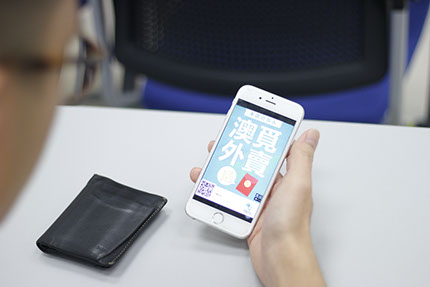
Aomi: First food delivery app in Macao
By Tiffany Chen

The first online platform of food delivery in Macao, Aomi, offers a more convenient delivery service for students in the University in Macau (UM). Aomi makes it easier for students who live on campus to taste more diverse food in Macao.
There are only a few restaurants in UM. Students and staff who have to stay on campus for a long time were already fed up with the canteen's menus. Hermione Nian, a year 4 student from mainland China said, "My friends and I feel so tired of food in UM because the dishes are the same all the time." Especially for staff and students who do not own a private car, they have to spend quite a long time going to the city center to look for more varieties of food.
For the traditional way of ordering a takeaway, the order would be accepted only when a bill reaches a certain amount of large quantity. Aomi makes it possible to place an order for only one or two people more easily. Kim Ho, a year 4 student who asks for delivery twice a week, said that it takes a really long time for delivery using Aomi. A staff from Aomi replied that there were around 200 delivery staff in Aomi and the company would consider two solutions to speed up the delivery time, one is to recruit more part-time or full-time couriers and the other is to build more large or small delivery sites to optimize the system of delivery.
The Aomi mobile application was founded in January 2016. Originally, it was the first online platform of food searching and delivery service which required people to pay online with credit cards. The mobile payment service was secured through the provision of the Bank of China in Macao and Cyber Source. On the other hand, people could also use Alipay and WeChat to pay for Aomi delivery in Renminbi according to the exchange rate at the day of payment. Users could leave comments and read comments from other users in this application. Also, according to Macao Daily, the Chief Operating Officer from Aomi, Shing Lei, expressed that Aomi application shortened the ordering time from five minutes to three seconds and it prevented errors in ordering.
This kind of service, combined with both online and offline services, would generate new consumers. It reduces the manpower to do the ordering service and increases the service efficiency greatly. It builds up a bridge between restaurants and consumers to make deals most conveniently.

BACK
Copyright © Umac Bridges Fall 2018